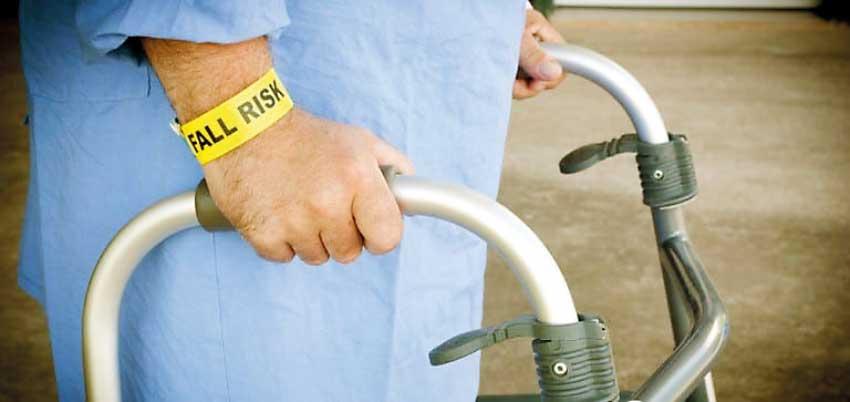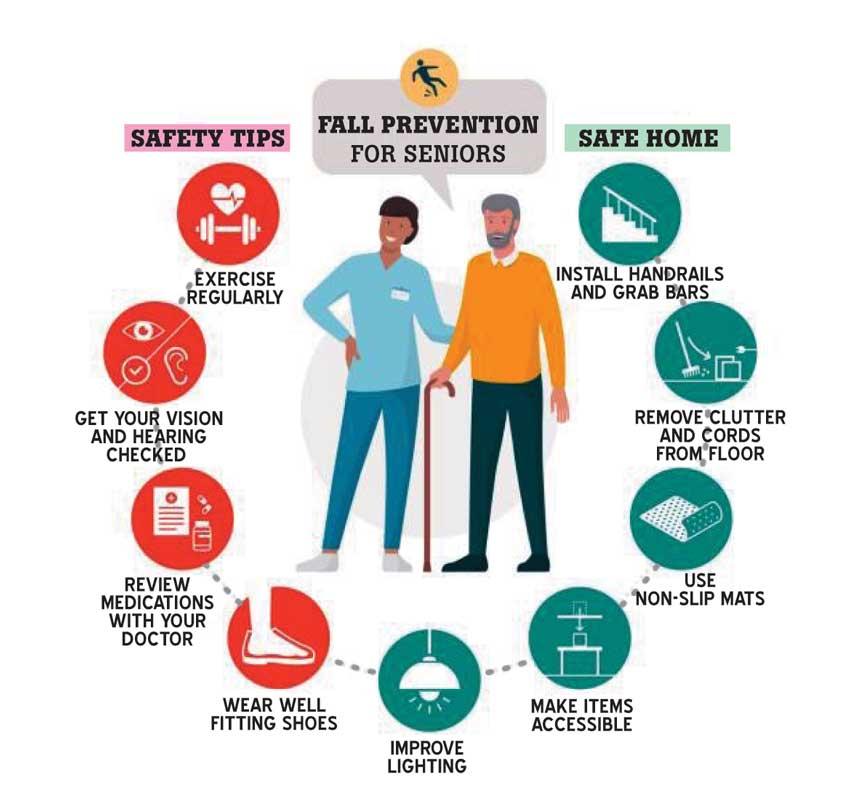28 Jan 2022 - {{hitsCtrl.values.hits}}

 Falls among the elderly are a common occurrence and contribute to significant morbidity and over time, mortality. With advanced age, it gets increasingly difficult for the body to heal and the fragile frame makes the body more vulnerable to injury. Recurrent falls may indicate an underlying cause, which will have to be identified and treated.
Falls among the elderly are a common occurrence and contribute to significant morbidity and over time, mortality. With advanced age, it gets increasingly difficult for the body to heal and the fragile frame makes the body more vulnerable to injury. Recurrent falls may indicate an underlying cause, which will have to be identified and treated.
Complications such as fractures cause severe morbidity, as surgical repair is too risky and living without surgery would mean a diminished quality of life for the patient, who would be bedridden or confined to one place. Bedsores and stagnated blood due to immobility would cause a multitude of medical and socioeconomic complications henceforth, which is why falls must be prevented at all costs. The causes of falls in the elderly are usually due to other coexisting health conditions.
Diabetic patients develop a progressive numbness in the extremities called sensory neuropathy. Sensory neuropathy usually affects the feet, rendering them incapable of feeling sensations. Long term diabetics with poor sugar control feel as if the shoes or slippers slide away as they cannot grip and feel their footwear. These patients are also more vulnerable to developing wounds as they do not feel injuries to the foot. Diabetes patients with severe sensory neuropathy are at a higher risk of falling. Diabetics should ensure their blood sugar is well controlled. A yearly foot review, where the foot status and risks are calculated, is a must.
Hypertension, Diabetes and Dyslipidemia (High cholesterol) have become common diseases in Sri Lanka. Although medicines are given to control these conditions, over time, patients would end up requiring more than one medication to keep the symptoms under control. Elderly patients who take multiple drugs for hypertension may experience postural hypotension, also known as orthostatic hypotension. This occurs when the body fails to adapt the BP quickly as the position changes.

These otherwise normal patients, experience dizziness or loss of consciousness when getting up from a chair or a bed. However, they recover within minutes. Blood pressure monitoring, both while lying down and standing upright, would aid the diagnosis. A significant difference in the readings within minutes of changing positions would suggest postural hypotension and explain the recurrent falls.
Dehydration can also cause postural hypotension. Since most elderly people are served food and water, neglect among the caregivers to refill their water adequately may result in reduced water intake. Being well hydrated is vital unless contraindicated. In some patients who have conditions such as heart failure, the physician may have recommended restricting the fluid intake. Patients with multi-organ complications should make it a point to clarify their water intake recommendation with their physician.
Parkinson’s disease and some other Parkinson-like neurological diseases have a characteristic shuffling gait, where the patient drags his feet when he walks, and walking becomes progressively difficult. untreated Parkinson’s disease may lead to recurrent falls.
If recurrent head injuries occur alongside falls, a condition called chronic subdural hematoma can develop, where there is bleeding in the brain following the injury, and the blood is accumulated over days. Confusion, drowsiness or even coma over days following the fall are usual symptoms, but some patients remain asymptomatic as well. Patients who take anticoagulant medication are more at risk in this case.
Assistive devices such as walkers, walking sticks and frames and appropriate footwear should be given to the elderly according to their preferences and ease. Paying attention to their complaints and evaluating their drug and water intake would prove helpful in preventing falls. In elderly women, prevention and treatment of osteoporosis would reduce fracture complications in the event of a fall.
20 Dec 2024 6 hours ago
20 Dec 2024 7 hours ago
20 Dec 2024 8 hours ago
20 Dec 2024 9 hours ago
20 Dec 2024 20 Dec 2024